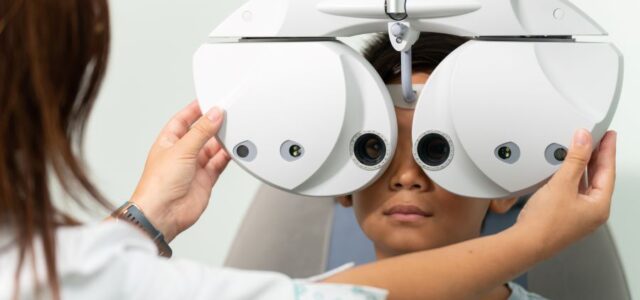Call for your appointment today 914-666-4665 | Mt. Kisco, New York

Lyme disease is typically associated with flu-like symptoms or neurologic complications but an infection with Borrelia burgdorferi (the causative agent of Lyme disease) can also cause problems with your eyes. In their article, “Co-infectious Uveitis With Syphilis and Lyme Disease: A Case Report,”¹ Mandal and colleagues describe what they believe is the first documented case of a patient with concurrent co-infection of syphilis and Lyme disease who developed uveitis (an inflammation of the middle layer of the eyeball).
Uveitis is caused by infections, autoimmune conditions and trauma. And although Lyme disease and syphilis have been known to impact the eyes and cause complications, these infections typically do not cause uveitis.
Diagnosing uveitis and treating it promptly are imperative, since patients are at risk for vision loss, according to the authors. Patients with severe eye complications are typically treated with tetracycline or beta-lactam antibiotics with/without steroids.
Case report: Lyme disease causes eye problems
A 45-year-old woman was admitted to the emergency department with a severe bifrontal headache associated with left eye pain and blurred vision in the right eye with floaters and clear fluid oozing from both eyes.
A few weeks earlier, she developed rashes on her palms, the soles of her feet and torso. But there was no known history of tick bites.
“The patient did not have any typical symptoms related to Lyme disease or syphilis on the initial presentation.”
Laboratory testing confirmed the diagnosis of panuveitis without macular edema or vasculitis and the woman began treatment with steroids and atropine eye drops.
However, her symptoms did not improve.
A few days later, she developed a fever, sore throat, and generalized lymphadenopathy. She reported having hepatitis C with the last treatment received one year earlier.
“To determine the underlying cause, a serological test for Borrelia and syphilis was conducted,” the authors state.
Test results were positive for both Lyme disease and syphilis.
And the woman was treated with intravenous penicillin and oral doxycycline. At discharge, her symptoms had somewhat improved.
Authors conclude:
- “Although Lyme disease and syphilis screening is not routinely conducted for every case of uveitis, serology should be considered on a case-by-case basis when there is a high suspicion of these infections.”
- “Concurrent co-infection of syphilis and Lyme disease is an unusual occurrence and can be associated with poor visual outcomes if treatment is delayed.”
- “Despite the preference for administering intravenous ceftriaxone in treating Lyme-uveitis, this patient responded well to three weeks of oral doxycycline.”
- “… recurrence following treatment of Lyme-associated uveitis is common (four out of seven patients) and may require second antibiotics.”
Case report: Lyme disease affects the eyes of a 10-year-old boy
After vacationing in an area endemic for Lyme disease, a 10-year-old boy developed problems with his eyes, which included sharp, bilateral eye pain, blurred vision and increased redness in his eyes over a 3-day period. However, he did not report having any tick bites.
Three months prior to presenting, he reportedly had mild, intermittent eye redness without any pain.
One month before he began having an increase in eye problems, the boy experienced “a brief generalized illness with fevers, headache, and cervical/post-cervical and submandibular lymphadenopathy,” the authors state.²
An examination and test results revealed he had uveitis due to Lyme disease.
“Early identification of Lyme-associated uveitis is crucial to initiate appropriate treatment and prevent long-term complications,” the authors state.
“This case illustrates the importance of maintaining a high suspicion for Lyme disease in patients with uveitis if there is a report of recent travel to Lyme-endemic areas.”
The boy’s symptoms completely resolved following treatment with a 2-month course of doxycycline and a prednisone taper. “A clinical examination showed no remaining signs of intraocular inflammation,” the authors state.
Authors conclude:
- “Lyme-associated uveitis, though uncommon, can lead to serious complications.”
- “Lyme-associated uveitis should be considered in any patient presenting with new-onset uveitis after travel to a Lyme-endemic area.”
- “A detailed history should focus on possible exposure and any symptoms outside of eye-related issues, though ocular involvement can be the sole manifestation of Lyme infection.”
Related Articles:
Vision problems in patient with Lyme disease and Giant cell arteritis
Optic neuritis associated with Lyme disease
Visual changes due to Lyme disease
References:
- Mandal S, Tayyab H, Mandal S C, et al. (April 19, 2024) Co-infectious Uveitis With Syphilis and Lyme Disease: A Case Report. Cureus 16(4): e58608. doi:10.7759/cureus.58608
- Andrew DesLauriers, BA; Marissa Larochelle, MD. Lyme Disease-Associated Uveitis: A Case Report and Review Emphasizing the Importance of Travel History and Geographic Considerations. August 9, 2023. Moran CORE. Clinical Ophthalmology Resource for Education.




I experienced “sparkle like” lights in both eyes whenever I got up in the night to use the bathroom. Went away when lights turned on.
In the morning , for the past 4 years, I awake with both eyes crusted .
Ears drain a waxy like substance. I feel it is not normal ear wax.
All these symptoms are slowly going away with my natural treatments.
I have Morgellons. Horrible painful skin lesions are slowly going away.
Canadian sufferer.